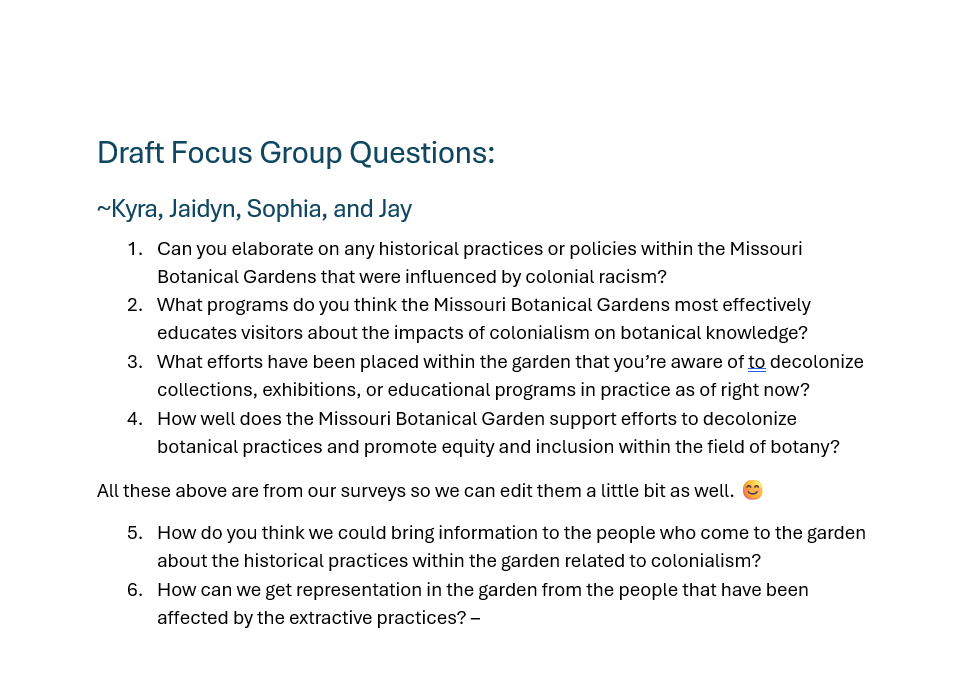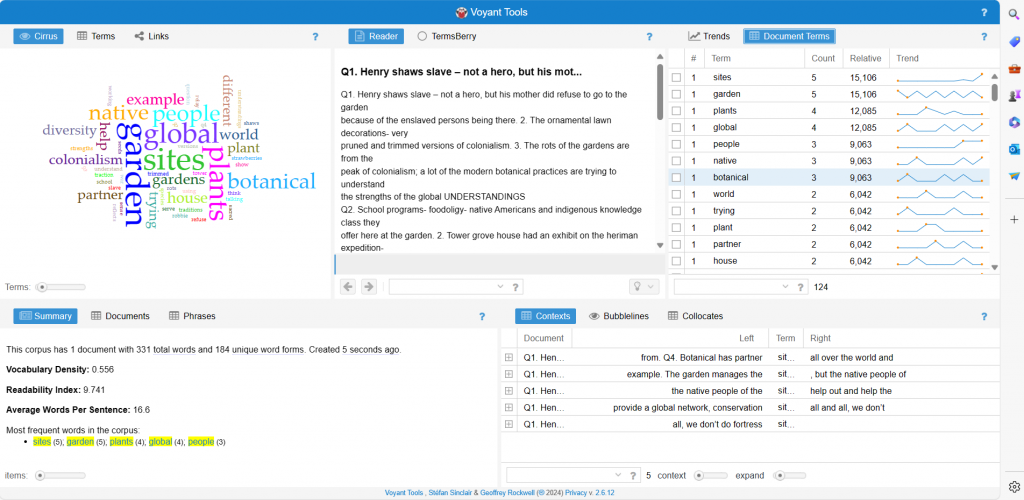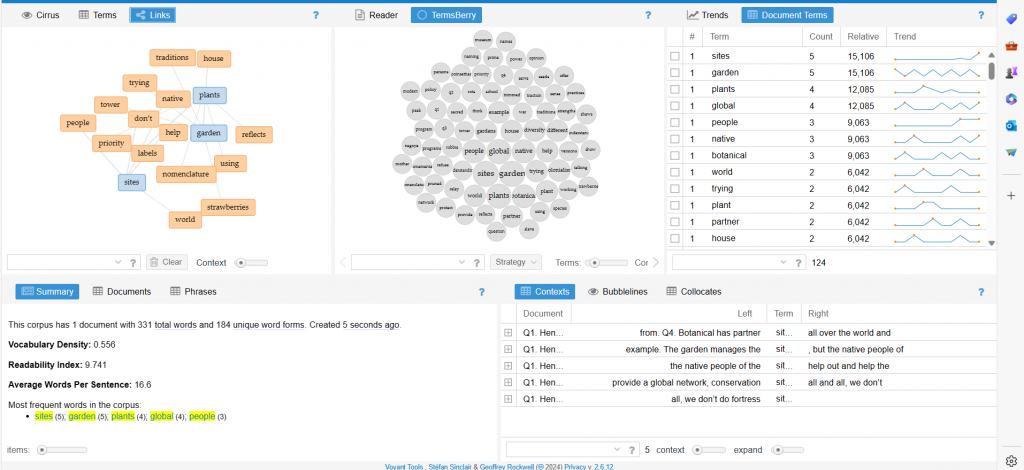SURVEY
This Lab consists of 2 parts, those being our surveys and the focus group we conducted. The other people in my group are Kyra, Jaidyn, and Jay, our research question is “How does colonialism affect the garden and herbarium”. Sadly, our survey wasn’t very helpful, with us only getting a singular response. This was disappointing because we put a lot of effort into making sure it was perfect and that our questions wouldn’t be difficult to answer. Leading to all of us wondering what we could have done wrong, as we understood it was a topic people didn’t really want to talk about. Due to its uncomfortable nature, but it still is important even if people don’t want to talk about it. We are trying to bring it to a better light, but due to the heaviness of our question. We think it’s the reason for the singular response we got.
FOCUS GROUP

Due to the lack of responses to our Lab it is a bit difficult to properly answer this lab. However, our focus group interview went a lot better than the surveys, because we actually had people with us to answer the questions we were asking. A question we asked was “what programs do you think MOBOT most effectively educates visitors about the impacts of colonialism on botanical knowledge?”. An answer to this question was that they had a table at the orchid show to help people learn and they would talk about the practices of acquiring the orchids. Which is a start to the education of colonialism, but a singular table isn’t going to have the big impact that they are looking for if they want to properly inform visitors. Another question that we asked was “how do you think we could bring information to the people who come to the garden about the historical practices within the garden?” An answer that we got was that they are actively working on ways to bring information to these people and they are working cross program, which means multiple parts of the garden are working together to find a way to get that information out.
when our interview was put into voyant


With our research I don’t think we’ve learned everything that we needed to know. As there is still so much, we could have learned if people answered our survey. I think maybe for our study next time that we maybe make the questions either more simple or try basing our questions on how our peers made their surveys. As they all got a lot more answers than we did, they must have done something that we just didn’t. I have nothing specific that I want to know currently but, the information I would like to know more is for the partners to elaborate a bit more about what they said in our focus group. So, we could get an even better idea of what they are working towards that relates to our research topic.